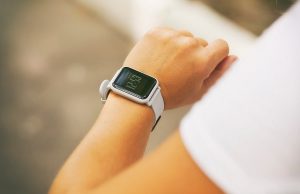A study tracking almost 10,000 9- and 10-year olds for two years finds a link between time spent watching TV and other screens with a higher odds for ADHD and depression.
“Screen use may replace time spent engaging in physical activity, sleep, socializing in-person and other behaviors that reduce depression and anxiety,” reasoned study lead author Dr. Jason Nagata, of the University of California, San Francisco (UCSF). HIs team published its findings Oct. 7 in the journal BMC Public Health.
As Nagata’s group noted, mental health issues have been on the rise among adolescents.
“Adolescents are 50% more likely to experience a major depressive episode and 30% more likely to commit suicide today than they were 20 years ago,” according to a UCSF news release.
At the same time, the average U.S. tween spends 5.5 hours per day looking at a screen, the researchers said, and that rises to 8.5 hours for teenagers.
Could there be a link?
To find out, Nagata’s team tracked data for 2016 through 2018 for 9,538 adolescents ages 9 and 10 enrolled in a major child brain development study. The children’s daily screen time and their rate of diagnoses for conduct disorders, depression, ADHD and other mental health issues were monitored.
The study couldn’t prove cause-and-effect, but the team did find small but significant associations.
“Higher total screen time was associated with all mental health symptoms,” the researchers reported.
Kids with the highest levels of daily time spent staring at screens had a 10% higher odds for depression, a 7% higher risk for conduct issues, and a 6% higher risk for ADHD, compared to children with lower rates of screen use.
“The specific screen types with the greatest associations with depressive symptoms included video chat, texting, videos and video games,” Nagata and colleagues noted.
The effect also seemed stronger for white adolescents than for Black adolescents.
“For minority adolescents, screens and social media may play a different role, serving as important platforms to connect with peers who share similar backgrounds and experiences,” said Nagata, an associate professor of pediatrics at UCSF. “Rather than displacing in-person relationships, technology may help them expand their support networks beyond what’s accessible in their immediate environment.”
Of course, there are ways parents can help pry their kids away from screens and towards more healthy pursuits, Nagata said.
“The American Academy of Pediatrics recommends developing a Family Media Use Plan that considers the unique needs of each child,” Nagata said.
More information
There are tips to helping your kids manage daily screen time at the Mayo Clinic.
SOURCE: University of California, San Francisco, news release, Oct. 7, 2024
Copyright © 2025 HealthDay. All rights reserved.

























